Ever thought about adding a Giant Gourami to your aquarium? Their sheer size can make them the centre piece of any home aquarium.
Reaching up to 70cm in size and originating from freshwater rivers in Asia, their diet and habitat needs are unique but manageable.
They’re not only about size; their social behaviour and compatibility with other fish make them interesting to observe including their unique the ability to breathe air directly from the surface due to a labyrinth organ.
Starting with the right setup—sizeable tank, proper filtration, and a diet rich in vegetation—can lead to a rewarding experience.
Table of Contents
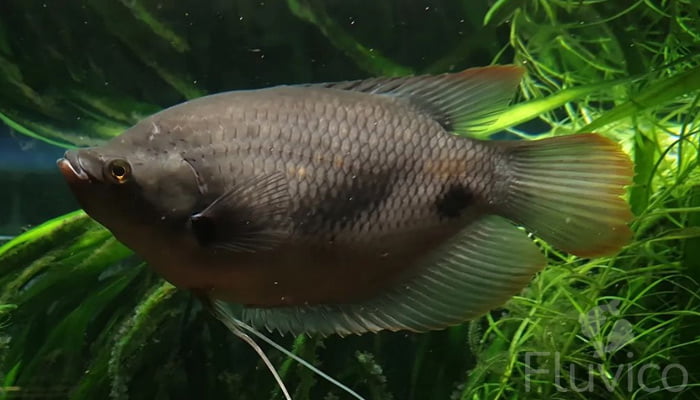
Giant Gourami Facts & Overview
| Giant Gourami Fact | Details |
| Scientific Name: | Osphronemus Goramy |
| Care Level: | Moderate |
| Native Region: | Southeast Asia |
| Lifespan: | Up to 20 years |
| Size: | 30–40 inches in captivity, up to 70 cm in the wild |
| Family: | Osphronemidae |
| Diet: | Omnivore |
| Minimum Tank Size: | 400 litres (approximately 105 gallons) |
| Compatibility: | Compatible with a variety of peaceful, similarly-sized species |
Understanding Giant Gourami
Appearance
- A large, robust body that can grow up to 70 cm in the wild, although aquarium specimens typically reach between 30-40 cm.
- A variety of colours ranging from silver-grey to darker shades, often with a blue or green tint.
- A distinctively flat, wide head and a rounded, arched back. Some have flatter wider faces, others are more pointed.
- Long, threadlike pelvic fins which they use to sense their surroundings.
- They have small, thick lips that help them forage for food.
- Younger Giant Gouramis feature a pattern of dark, irregular stripes or bands, but these tend to fade as the fish matures.
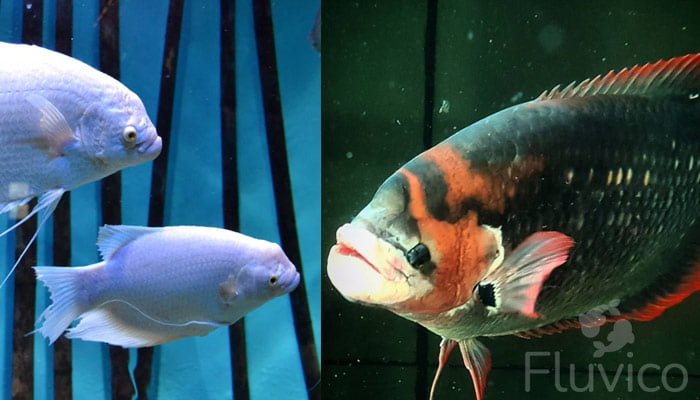
Colour Varieties
The colour variation is primarily due to two factors: genetics and environmental conditions.
- Genetics: Different genetic strains can produce Giant Gouramis with various colour patterns. These can range from a silvery-blue hue to more vibrant shades of orange or gold. There are also albino versions.
- Environmental Conditions: The specific conditions in which a they live can influence its colour. Factors such as diet, water quality, lighting, and overall health can all affect a Giant Gourami’s colour. For instance, a well-balanced diet can enhance their natural hues, while stress or poor health can cause their colours to fade.
In the wild, their colouration may also serve to help them camouflage in their natural environment or signal certain behaviours, such as readiness to breed.
Red Tail Giant Gourami
Unlike the common variety, which is primarily grey or silver, The Red Tail Giant Gourami adds a splash of colour with a distinctive red caudal fin. They share similar care requirements, including a preference for ample space and a varied diet.

Behaviour and Compatibility
They are generally peaceful and sociable fish, but their behaviour can change based on various factors such as their environment, diet, and interaction with other species.
Behaviour:
- They are known for their intelligence and curiosity. They have been observed to recognize their caretakers and even respond to feeding routines.
- They are active swimmers and require plenty of space to move around.
- They can also breathe air directly due to a unique organ called the labyrinth, allowing them to survive in diverse water conditions.
- Male Giant Gouramis can become territorial, especially during breeding season.
Compatibility:
- They get along with most fish species that match their size and peaceful nature. They should not be kept with very small species that they could perceive as food, or with overly aggressive fish that could stress or injure them.
- While they can coexist with other Giant Gouramis, be mindful of space. If the aquarium is too crowded, territorial disputes could occur, especially among males.
- They’re compatible with other large, peaceful freshwater species like Goldfish, Angelfish, or Bala Sharks.
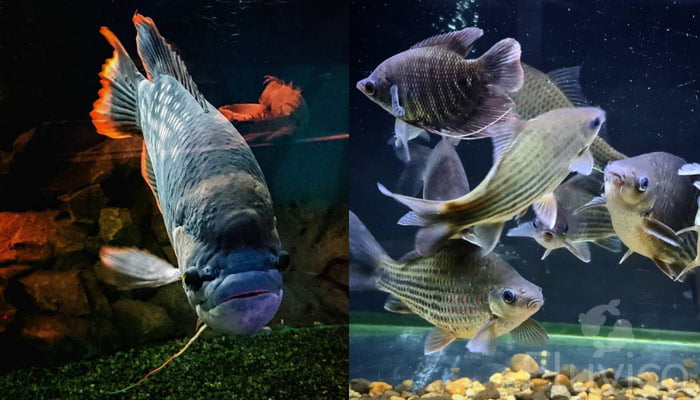
Sexual Dimorphism (Determining Gender)
Sexual dimorphism in Giant Gouramis, as in many fish species, involves certain physical differences between males and females. These differences are not very noticeable in young fish but become more so as they reach maturity.
- Size: Males typically grow larger than females. However, this is not a definitive indicator as size can vary depending on diet and living conditions.
- Colour: Males often develop a darker, more vibrant colouration during breeding season, whereas females maintain a lighter, more uniform colour.
- Dorsal and Anal Fins: The dorsal and anal fins of males are generally more pointed, whereas those of females tend to be more rounded.
- Body Shape: Mature males have a more angular, pointed head shape, while females have a rounder, more curved forehead.
- Throat Lappet: Males develop a large, thick throat lappet (a skin fold hanging from the neck area) as they mature, which is less pronounced in females.
Bear in mind that these are general guidelines and there can be exceptions. If accurate gender determination is essential for breeding purposes, it may be best to consult with a fish expert or a reputable breeder.

Tank Sep up
Aquarium Size
- Tank Volume: They need a spacious tank, with a minimum volume of 400 litres for a single Giant Gourami.
- Tank Dimensions: Given their size and active nature, they require plenty of swimming space. A long tank is more suitable than a tall one. The minimum recommended dimensions are 180 cm in length, 60 cm in width, and 60 cm in height.
- Additional Fish: If you plan on having more than one Giant Gourami or other large fish in the same tank, you’ll need to increase the tank size accordingly to prevent overcrowding and territorial disputes.
- Future Growth: Always consider the full grown size of the fish when choosing a tank. They grow quickly, and moving them to a larger tank later on can be stressful for both you and the fish.
Water Parameters and Conditions
- pH Level: The water should be slightly acidic to neutral, with a pH range between 6.0 and 8.0.
- Hardness: They are quite adaptable and can tolerate a wide range of water hardness levels, from 5 to 20 dH.
- Filtration: A high-quality filter is necessary to keep the water clean and free from toxins. They produce a significant amount of waste due to their size and diet.
- Water Changes: Regular water changes, about 20-30% every week, are essential to prevent the build-up of nitrates and other harmful chemicals.
- Oxygen Levels: Despite their ability to breathe air directly due to their labyrinth organ, it’s still important to ensure good oxygenation of the water. This can be achieved with a good filter and air stones.
- Tank Cover: As Giant Gourami’s can breathe air, it’s crucial to leave some space between the water surface and the tank cover.
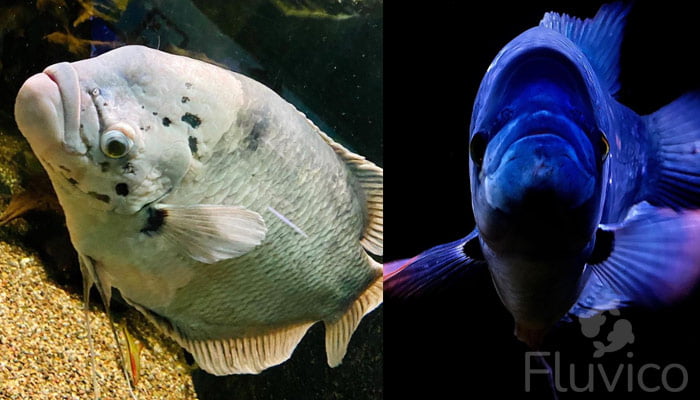
Decoration (Artificial Habitat) and Compatible Plants
- Substrate: Choose a soft, fine-grained substrate to mimic the muddy river bottoms they are used to. Sand or fine-grained gravel works well.
- Hiding Places: Use decorations such as rocks, caves, driftwood, or even PVC pipes to create hiding spots and provide your fish with a sense of security.
- Open Swimming Space: While decorations are important, remember to leave plenty of open swimming space for them, as they are active swimmers.
- Java Fern: This hardy plant can tolerate a variety of conditions and is difficult for the fish to uproot.
- Anubias: This is another robust plant that can be attached to rocks or driftwood in your aquarium.
- Amazon Sword: These large, leafy plants can provide great cover for your Gourami.
- Vallisneria: They grow tall and can create a forest-like effect in the background, giving your fish plenty of hiding places.
Bear in mind that Gouramis are known to nibble on plants, so opt for species that are fast-growing and can withstand a bit of grazing. 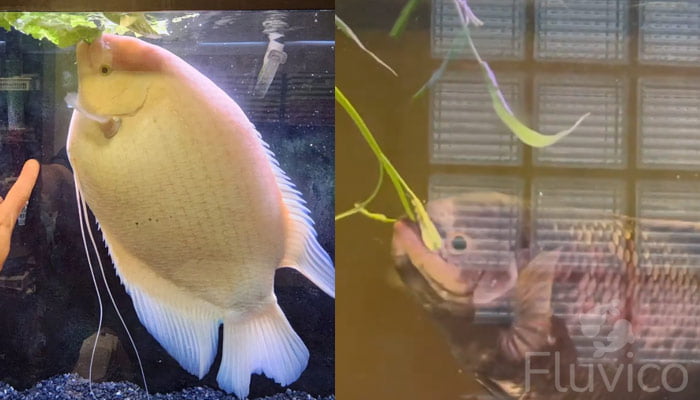
Giant Gourami care
Diet and Nutrition
Giant Gouramis are omnivores with a wide-ranging diet that encompasses both plant-based and protein-rich foods.
- Balanced Diet: A combination of commercial foods, fresh produce, and live or frozen foods provides a balanced diet. Commercial pellets or flakes designed for large, tropical freshwater fish form a good base diet.
- Plant Matter: They enjoy nibbling on soft aquatic plants and should be offered vegetables like lettuce, spinach, peas, and zucchini. These can be blanched to make them softer and easier to eat.
- Proteins: Supplement their diet with protein sources such as earthworms, brine shrimp, bloodworms, and small pieces of seafood like fish or prawns.
- Variety: Rotate their foods to ensure they get a range of nutrients. This also prevents them from becoming picky eaters.
- Feeding Schedule: Feed your Giant Gouramis once or twice a day, only as much as they can consume in 2-3 minutes. Overfeeding can lead to health issues and pollute the tank water.
- Watch Their Weight: They are prone to obesity, so be careful not to overfeed them, and keep high-fat foods to a minimum.
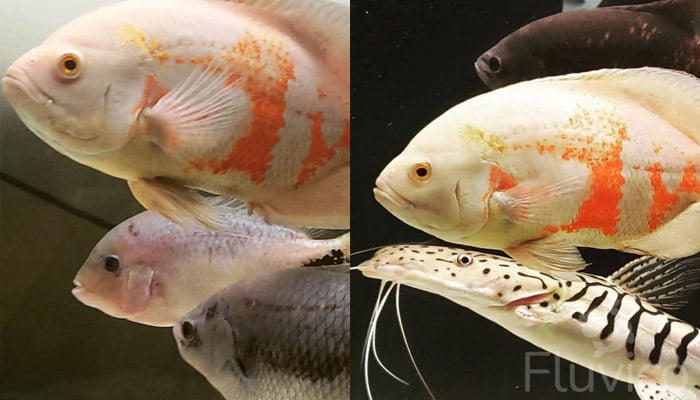
Compatible Tankmates
Due to their size, they should not be kept with very small fish that they may perceive as food.
- Other Large, Peaceful Fish: They can cohabitate well with other large, non-aggressive species. Examples include Goldfish, Angelfish, and Bala Sharks.
- Other Giant Gouramis: They can live with their own kind, but make sure to provide enough space to prevent territorial disputes, especially if you’re keeping multiple males.
- Smaller, Peaceful Fish: While smaller fish can coexist with them, but not too small to be considered prey. Tetras, Barbs, and Rasboras can usually share a tank without issues.
- Bottom Dwellers: Species like Plecos and Loaches can make good tankmates since they occupy different levels of the tank.
Breeding the Giant Gourami
Breeding Giant Gouramis is a challenging task due to their large size and specific requirements, but it can be accomplished with proper preparation. Here are the basic steps:
Sex Identification:
First, ensure that you have both a male and a female. Males are typically larger with more pointed dorsal and anal fins, and they develop a darker coloration and a thicker throat lappet during breeding season.
Prepare the Breeding Tank:
Set up a separate breeding tank with a lower water level (about 30 cm deep) and a warm temperature (around 28°C). The tank should be spacious and contain vegetation for the male to build his nest.
Condition the Breeders:
Feed the breeding pair a high-quality, varied diet to get them into top condition for breeding. This could include live foods, high-quality pellets, and fresh vegetables.
Introduce the Breeders:
Place the pair into the breeding tank. The male will begin to construct a bubble nest among the plants using plant debris and bubbles.
Spawning:
Once the nest is built, the male will court the female by swimming around her and showing off his colours. If the female is receptive, she will allow the male to wrap around her in a ‘mating embrace’. The female will release her eggs, and the male will fertilize them.
Egg Care:
After fertilisation, the male will collect the eggs in his mouth and place them in the bubble nest. At this stage, it’s advisable to remove the female from the tank as the male may become aggressive in his efforts to protect the eggs.
Hatching:
The eggs will typically hatch within 24-48 hours. The male will continue to guard the nest and retrieve any fry that fall out.
Rearing the Fry:
Once the fry become free-swimming, typically within 3-5 days, it’s safe to remove the male. The fry can be fed infusoria or commercially available fry food until they are large enough to eat brine shrimp or micro worms.
Health and Disease
Giant Gouramis, like any other fish species, can suffer from a variety of diseases. The best prevention is maintaining optimal water conditions, feeding a balanced diet, and minimizing stress.
- Ichthyophthirius (Ich): Also known as white spot disease, this parasite causes white spots on the fish’s skin, fins, and gills. Infected fish may also exhibit erratic swimming, loss of appetite, and may try to rub against objects.
- Fin and Tail Rot: This bacterial infection causes fins and tails to appear frayed or discoloured. It is usually a secondary infection that sets in when a fish’s health is already compromised.
- Dropsy: This condition, characterized by a swollen abdomen and protruding scales, is usually caused by a bacterial infection but can be triggered by various factors. It is often a sign of kidney failure.
- Swim Bladder Disease: Affected fish have difficulty maintaining their buoyancy and may float upside down or at an angle. It can be caused by a variety of factors, including poor diet, abrupt changes in water conditions, or bacterial infections.
- Parasitic Infections: Giant Gouramis can suffer from various parasites, which can lead to a range of symptoms, from loss of appetite to visible spots or worms on the body.
If you observe unusual behaviour or changes in appearance, consider seeking advice from a fish health professional or an experienced aquarist. Always quarantine new fish before adding them to your existing tank to prevent the spread of diseases.

Should You Get a Giant Gourami for Your Aquarium?
Deciding whether to add a Giant Gourami to your aquarium requires careful consideration. They are the largest in the gourami family.
They are generally peaceful and can coexist with other fish of similar size, but they may be territorial, especially if space is limited. They are also relatively hardy and adaptable to different water conditions, which can simplify their care.
One of the most rewarding aspects of keeping them is their intelligence, recognising their owners and responding to feeding routines.
In summary, if you have ample space, can provide a suitable diet, and are up for a long-term commitment (these fish can live up to 20 years!), a Giant Gourami could be an exciting and rewarding addition to your aquarium. However, it’s not a decision to be taken lightly. Every fish deserves a proper home that meets its specific needs.

FAQ
Is the Giant Gourami aggressive?
They are generally peaceful, but can exhibit territorial behaviours, especially during breeding season. Males can also become aggressive towards each other if they feel their space is threatened.
Can you keep Giant Gouramis together?
Yes, they can be kept together, but given their potential size and territorial nature, especially among males, a sufficiently large aquarium is crucial.
What size tank do Giant Gouramis need?
Given their potential size, Giant Gouramis require a spacious tank. A single Giant Gourami needs a minimum of 400 litres, with recommended tank dimensions of 180 cm in length, 60 cm in width, and 60 cm in height.
Do Giant Gouramis eat Guppies?
Yes, they can eat guppies due to their size difference. Guppies may be seen as prey, especially if the Gourami is fully grown. Therefore, it’s generally not recommended to keep these species together in the same tank.
How big do Giant Gourami get?
In the wild, they can grow up to 70 cm. However, in aquarium conditions, they typically reach sizes between 30 and 40 cm, depending on their diet and the size of their tank.
Why is my Giant Gourami not eating?
They might not be eating due to various reasons such as illness, stress, poor water conditions, or an inappropriate diet. It’s essential to monitor water parameters, observe your fish for signs of illness, and ensure a varied, balanced diet.
More Reading

15 Types of Cryptocoryne: Which is Best For Your Aquarium Setup?

16 Awesome Low Light Aquarium Plants (Mosses, Ferns & Stem Plants)


18 Types of Aquarium Moss: Photos, Care, Propagation & Growth Guide
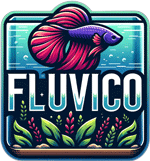
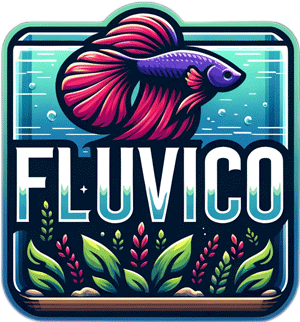
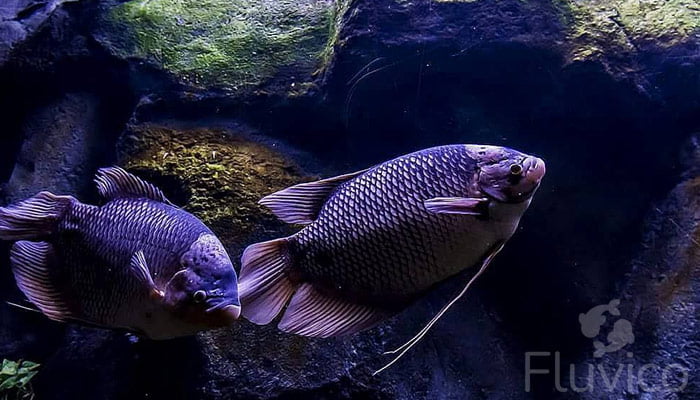
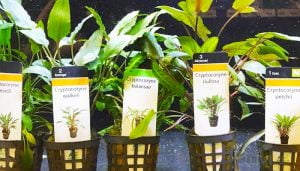
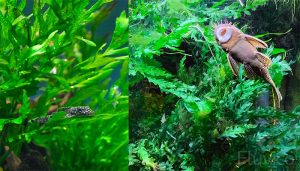
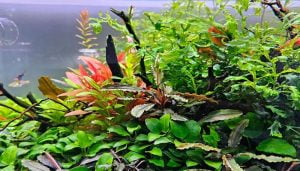

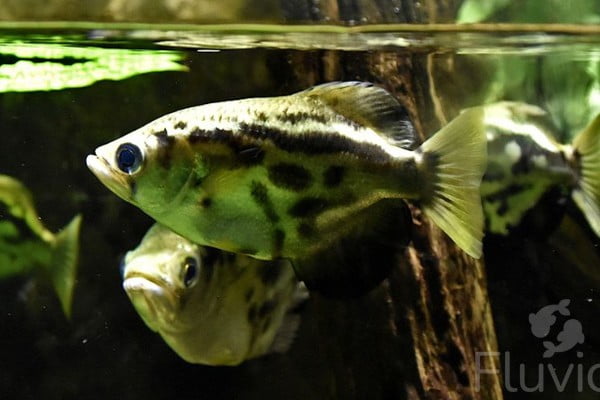
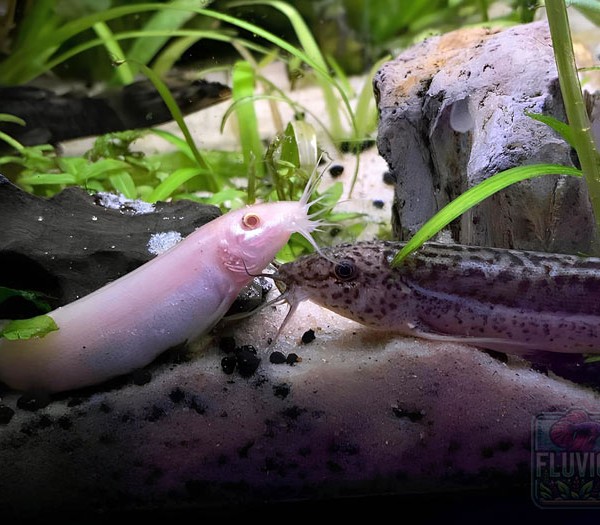



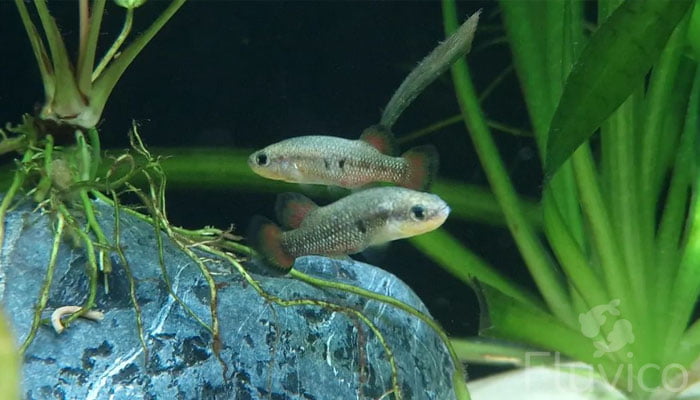
Hope you enjoyed our Giant Gourami Care Guide!
If you have any questions? Ask away, we’re here to help!
All the best,
Daniel